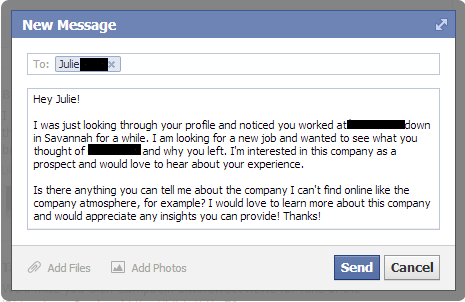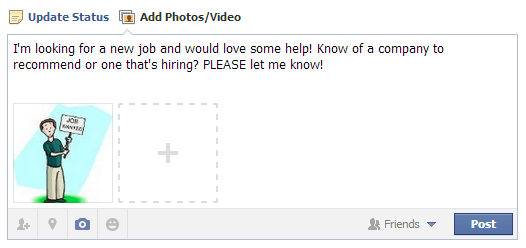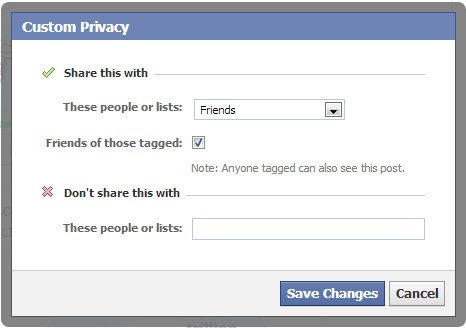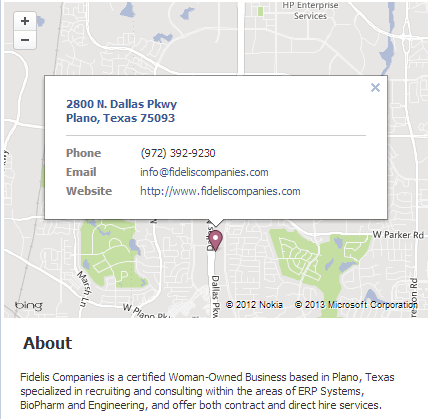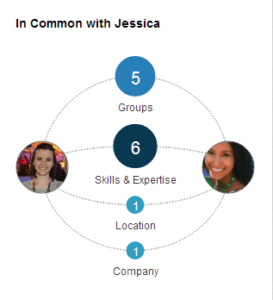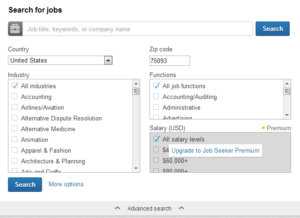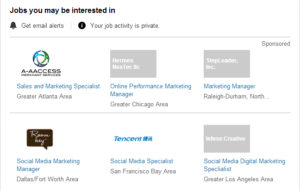As I sat in the college academic advisement office, situated in the rather antique styled Kansas State University administration offices, armed with my most current transcripts, a career plan I had meticulously designed…fresh shirt, polished shoes, freshly shaved with just a hint of expensive cologne I had used from the sample bin at Macy’s. I let my mind drift, as I tried to breathe deeply, calming my nerves and subduing the building excitement and anticipation of the glorious career future I could expect.
Obviously, with one look at my grades, my appearance, the strength of my voice and the conviction in my words, this counselor would quickly understand he had “gold” in his office.
Would I be hired as a president, or would I have to actually show them what I can do? After just scraping by in college, odd-jobs, garage sales, begging mom and dad for must a little more “support”, this six figure income position was going to be a new life.
What would I buy first? A penthouse apartment in the highest building in the city? A Porsche, to replace the 14 year old Corolla that was in serious need of repairs? An entire wardrobe, designed for those with the hard-to-fit “husky” profile? Of course with this new status, this life changing career all my professors have spoken of once you have “the golden ticket” – your diploma. I would probably just buy it all.
His office was filled with expensive framed diplomas; each represented a class, seminar or certification in advisement and counseling. Thank you letters, personally addressed to him adorned one wall…each thanking him for his advice and collaboration. Several were signed by “President” or “VP” of this or that, all of them sending me a clear signal: I had arrived at freedom. I was sitting in the office of the matchmaker of financial freedom; the guru of careers, the ‘one’.
I studied business, marketing and sales management. I found a way to pass basic college math. Slept through my electives, sat behind a really smart girl in economics and pestered my roommate to cram with me for the final in geography. Through all the parties, all the studying, all the sleepless nights; some actually attributed to classwork. I had passed. I had achieved the golden ticket… I had “set myself apart” just like all the ads I had seen foretold of college graduates. I have seen 1000’s of commercials on television of students, from various colleges and technical universities, revealing how they had changed their lives by graduating and getting out of a dead end job. It was my time.
As he studied my transcripts, obviously marveling at the intelligence and savvy each grade and subsequent professor’s comment outlined, I found myself inching forward in my chair, anticipating the words that would soon pour from the lips of this career guru.
“Have you ever thought about sales as a career?” “Maybe marketing?” ……”Oh! I have it…recruiting!?”
Sales, marketing, recruiting…what was he talking about? I had sold the idea of throwing multiple parties to my roommate throughout these 4 years…I had done some marketing, albeit, the marketing typically revolved around marketing my ideas about the need for additional funds to my parents….Recruiting? Isn’t that what the coaches did to kids in high school they wanted to have on their college team? Did he think I was an athletic coach? Did he misread my transcripts? Perhaps he had the wrong transcripts and student folder in front of him…that had to be it.
As I left his office that day, the VP titles I had dreamed about, the Porsche, wardrobe, vacations, furniture, luxury apartment…everything I had done without for these 4 years of academic hell quickly swirled down the dream toilet.
Hello world, I’m a college graduate! The world is supposed to be mine. Where’s my golden ticket!?
I was fortunate that, after my disappointing meeting with ‘the one’, I stumbled into a career that I enjoyed. For 17 years, I discovered and stayed in an industry which peaked my interest, satisfied my financial needs and continued to elevate me into a higher status with the company, offering the ability to manage people, implement positive change and create a reputable name for myself. I had risen to the top of retail sales, earned a good living and was known throughout this industry as someone who had proven himself. All the nights, weekends and holidays that I had sacrificed over the past 17 years had paid off. But where was I? What was next?
My brother had left coaching and teaching to be a recruiter several years ago. I never really talked to him about what he did; it was an abstract title that I didn’t really understand. When I called him to inquire about his role, what he explained intrigued me.
“So you get paid to find people jobs, with companies that need their skills?” “Why would they pay you for that?” “Why don’t the companies just run ads?”
On February 1, 2000, after relocating to Dallas, Texas, I sat at my new desk, in my new company, poised to be successful in my new career: recruiting. I remembered the questions and answers my brother had given regarding recruiting. “We find people jobs with companies that need their skills.” This was going to be easy.
The account manager at my new company, who had clients that requested our assistance in finding specific people, began talking about the open positions we would be working on, illustrating the specific skills each candidate needed in order to qualify for these openings. We would be recruiting for Information Technology positions (IT), and the acronyms associated with these positions might as well have been spoken in German. My extensive computer savvy over the past 17 years included turning on a fax machine, balancing a credit card transaction machine, and once, being shown how to write a formula in Lotus 123.
HTML, Java, Sonet, database architecture, etc., the list went on and on. Each new requirement, a word I hadn’t heard before, let alone, one that I would understand as it relates to the position. Names of companies I didn’t know existed, certifications I had never heard of before.
Not only were the job descriptions foreign to me, I was quickly learning that the recruiting industry had their own set of never before heard acronyms to explain their functions. “POEJO”…when I heard this, I assumed it was just her Texas accent and there was obviously someone in the room named Joe who had fallen on hard times. “JO’s”, “SO’s”, the slang terms kept coming. There was a computer on my desk…new, shiny, with a blinking green dot at the top of the screen, obviously inviting or encouraging me to do something…I just didn’t know what. People kept referring to their date base; being single, I was encouraged that so many people in the office were dating so frequently that they needed to keep track of it on their computer. Maybe Texas was going to be a good move! Obviously, I later learned it was the company’s database, not a date base; and there would be a need to learn how to use this computer.
I guess I never imagined how one would go about finding people to fill these jobs. I assumed that I would just run an ad in the paper or something, and as people called, informing me they saw my opening and they wanted the job, I would send them over to the company, and watch the money pour in. Needless to say, this wasn’t the strategy widely accepted in the recruiting business.
Thirteen years later, as I look back on the first days of recruiting, I wonder how I have made it this far. I had no computer training prior to starting, had never made a “cold call”, had never interviewed for a job personally, let alone prepare someone for an interview. I had always been someone with a base salary, paid commission for my sales, etc…knowing every two weeks what my paycheck was going to say. For the past 12 years and 9 months, of my 13 years in recruiting, I have been commission only. I have relied only on my efforts, drive and professionalism to provide my personal income. Sometimes, I wonder how I have survived.
Several months ago, as I walked into my home after a day of recruiting, I was met by my 4 year old daughter. She has gotten into the repetitive habit of asking; “How was your day?” She has heard my wife greet me with this question and adopted it as her own greeting. She always follows with, “What did you do at your job today?” I suppose, what happened in my day seemed infinitely more interesting than her own routine of eating, playing, coloring, reading and celebrating the daily accomplishment of keeping her “big girl panties” dry. My standard response is typically, that I talked to a lot of people on the phone today I didn’t know, and made new friends. On this day, after asking her coined phrase related to the disposition of my day, she asked, “Did you talk to people you didn’t know today and make new friends?”
Hearing the words, seeing the seriousness of her question emphasized by her raised eyebrows and half smile…it hit me. My job directs me to call both candidates and companies, uncover the specific needs of clients and match their needs to the skills of the candidates we represent. My career has revolved around talking to people I didn’t know, and making new friends. It wasn’t just a response to a question; it has been my lifestyle for the past 13 years.
There are a lot of books, webinars, conferences, audio tapes and interactive videos made my seasoned recruiting professionals on the market. Each one illustrating different techniques related to our industry to maximize your success as a recruiter. Over the years I have seen a countless number of amazing speakers, applied numerous techniques they have shared and embraced the fruits of success as a direct result of being exposed to their expertise.
Information is power, and this industry is so gracious with sharing and teaching this information. So many of the top producers in the recruiting industry have painstakingly produced literature and sacrificed their personal and professional time in an attempt to share their methods of success with others. There are very few industries where people that reach the “top” and want to bring others with them. We are driven to see one another succeed.
But, as with anything in life, everything essentially pairs down to its simplest form. Religion, marriage, sports, life….whatever “category” you choose, our humanistic approach to understanding the core of the topic is to break it down to its simplest form, a form we individually understand.
Treat candidates and clients fairly. Be honest every time. Return calls. Take the time to understand the needs/wants/desires of everyone involved in the process. Never forget that it’s not a resume, it’s a person.
My “simplest form” for recruiting is this: “Talk to people I don’t know, and make new friends”. It took a 4-year-old to help me understand what my true career was really all about.
Johnny Letourneau


